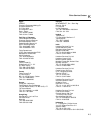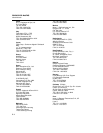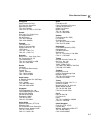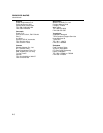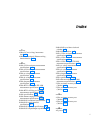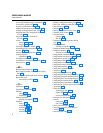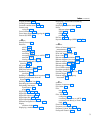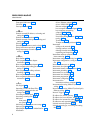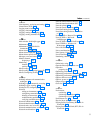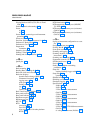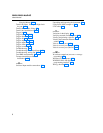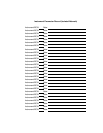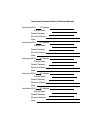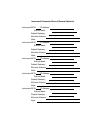
Index
(continued)
5
—L—
Line frequency, reviewing and setting, 2-29
Linearization, RTD, D-1
Logging status window, 4-7
Logging, simulated, 4-5
Logging, starting and stopping, 4-3
Logging, starting automatically, 3-14
—M—
Main window, NetDAQ Logger, 3-3
Maintenance, 6-3
Maintenance of 2640A/2645A
instruments, 6-3
Master alarm, 1-10, 2-14
Master alarm output test, 6-29
Master alarm specifications, A-6
Messages, error and status, J-2
Monitor channel
displaying a, 2-22
Monitoring
channel, 1-8
totalizer status, 2-26
Mx+B scaling, 1-7
Mx+B scaling, configuring from a file, 3-25
Mx+B, Configuring Scaling, 3-22
—N—
NetDAQ and network communication
techniques, I-2
NetDAQ Logger commands, accessing, 3-3
NetDAQ Logger, starting, 3-3
Netdaq.ini file, configuring the, 3-29
Network
adding an instrument to, 3-5
configuring communications, 3-4
deleting an instrument, 3-7
troubleshooting problems, 2-58
verifying communications, 3-7
Network Administrator, I-2
Network administrators, notes to, I-13
Network cards, two in one PC, I-15
Network communications, configuring, 3-4
Network considerations, I-1
Network interconnection devices, I-4
Network interface hardware (PC), I-9
Network primer, I-3
Network speed, increasing, 4-21
Newt Networking Software, I-20
Newt Networking Software, installation
of, I-24
Newt TCP/IP vs. Banyan Vines, I-22
Newt TCP/IP vs. Microsoft
LANManager, I-22
Newt TCP/IP vs. Novell NetWare, I-21
Newt TCP/IP vs. Windows for
Workgroups, I-23, I-24
Noise and shielding, B-2
Noise considerations, B-1
Note System, Using the, 5-24
Novell NetWare, I-21
Numbering, channel, 1-7
—O—
Online help, using, 4-21
Open thermocouple response test, 6-16
Operation
preparing for, 2-3
Optimizing performance, 4-20
Optimizing performance for precision, 4-21
Optimizing performance for speed, 4-20
Options and accessories, 1-14
Options, power-on, 2-21
Output, trigger, 1-9, 2-14
Overview, 1-3
—P—
Performance
optimizing, 4-20
optimizing for precision, 4-21
optimizing for speed, 4-20
Performance test, 6-6
Physical layer wiring schemes, I-4
Playing Back a Fast Binary (BIN) File in
Trend Link, 5-5
Playing Back a Trend Link (SET) File in
Trend Link, 5-4



